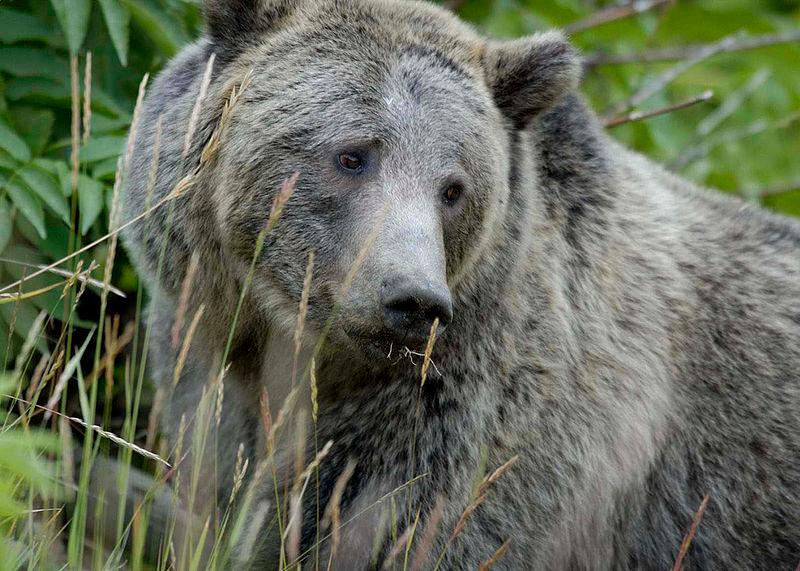What’s behind the grizzly bear attacks in Yellowstone?
The number of grizzly bears in the Yellowstone region has jumped from 136 in 1975 to 602 in 2010. (Photo courtesy of the U. S. Fish and Wildlife Service via Wikimedia Commons.)
Nearly 3.5 million people visited Yellowstone National Park last year, but at least two of them didn’t make it out alive. They were killed, one partially eaten, by grizzly bears.
Now many are wondering what caused the deadly attacks. From 1986 to 2010, there were no fatal encounters with grizzlies. An article published last year in Men’s Journal implied that they were starving because of the effects of global warming. With their usual food sources — whitebark pine seeds and cutthroat trout — disappearing, the desperate bears would eat almost anthing, including humans.
But is that an accurate explanation? Reporter Jeff Hull set out to answer that question in the June issue of Outside Magazine. His reporting led to a entirely different conclusion — mainly that human-bear encounters are increasingly common because of rising bear populations and more visitors to the park.
At the same time more and more people flood Yellowstone every year, a successful recovery program has helped grow the park’s grizzly population. The number of bears in the Yellowstone region has jumped from 136 in 1975 to 602 in 2010.
Run-ins with the grizzlies are much more likely as a result of the repopulation efforts. But the bears may not deserve all all the blame.
“The vast majority of bear attacks it seems are defensive attacks,” he said. “They’re not stalking you. They’re not trying to eat you. They’re not trying to kill you. They just don’t know what you are.”
Hull said people needed to better prepare themselves before hiking in Yellowstone. Carrying bear spray at all times is a must. Neither of the people killed last year did.
Experts agree that freezing in place is often the best option in the event of a bear encounter. If the bear refuses to back down, Hull advised hikers to essentially play dead.
“That’s the last resort,” he said. “If it keeps coming then what you want to do is drop to your stomach, legs kind of spread, and hands locked behind your neck to protect your neck.”
While park and government officials decide how best to control the growing grizzly population, Hull said local ranchers may take matters into their own hands to protect their families and livestock.
“They’re the people who are going to have the grizzly in their scope,” he said. “They’re the ones who can pull the trigger or not pull the trigger.”
He called their vigilante approach to animal control “shoot, shovel and shut up.” Because grizzly bears are listed as an endangered species, killing one is a federal offense.
And with a population of only 600, every bear makes a difference.
“You don’t have any spare animals that you can waste,” Hull said. “You need to keep those, especially females, in the breeding population.”
